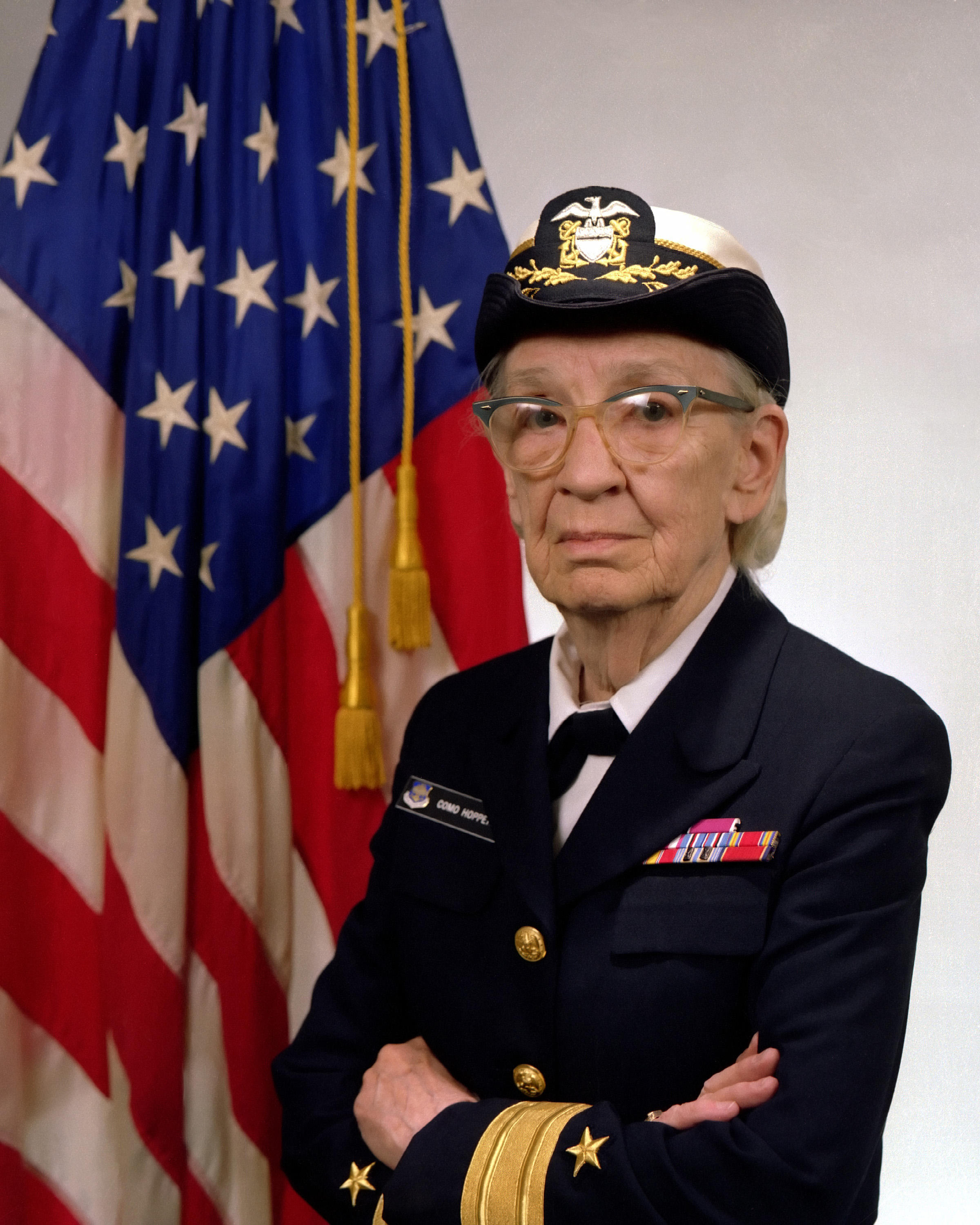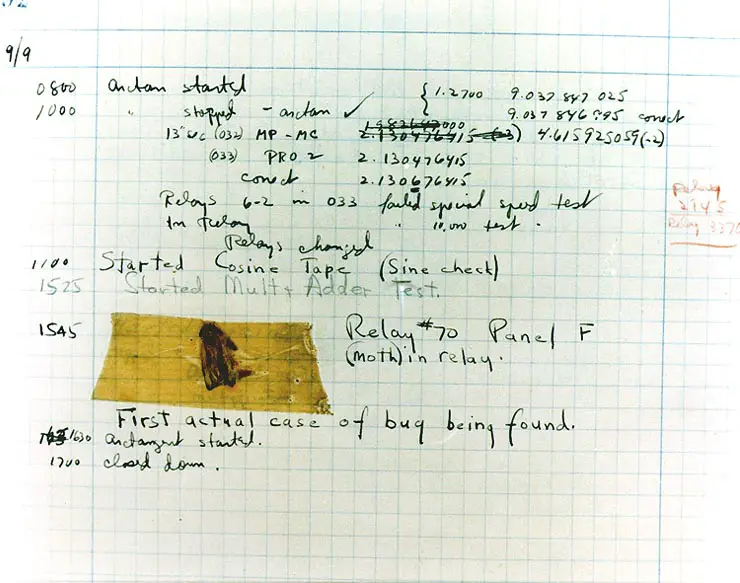Hopper in the 1970s became a proponent of centralized systems, like the ones that many businesses have today: terminals or desktop computers linked to a common network. Her work on standards for testing such computer systems led also to the development of another well-known computer language, FORTRAN.
 Hopper retired in 1966, at age 60; she had attained the rank of Commander. A temporary reinstatement a year later turned into an indefinite appointment, and she attained the rank of Captain in 1973. She was promoted to Commodore in 1983 and, when she retired for good in 1986, left the navy as Rear Admiral (the name to which Commodore had changed.) Her retirement age was 80, and that made her the oldest active duty officer at the time. The Defense Department awarded her the Defense Distinguished Service Medal, the highest non-combat decoration possible.
Hopper retired in 1966, at age 60; she had attained the rank of Commander. A temporary reinstatement a year later turned into an indefinite appointment, and she attained the rank of Captain in 1973. She was promoted to Commodore in 1983 and, when she retired for good in 1986, left the navy as Rear Admiral (the name to which Commodore had changed.) Her retirement age was 80, and that made her the oldest active duty officer at the time. The Defense Department awarded her the Defense Distinguished Service Medal, the highest non-combat decoration possible.
Hopper was not done with work, however. She joined the Digital Equipment Corporation as a senior consultant and remained there until she died, in 1992. She was 55.
Hopper was buried in Arlington National Cemetery, with full military honors. President Barack Obama in November 2016 posthumously awarded her the Presidential Medal of Freedom. The Naval Academy has announced that her name will adorn its new cyber building.
Hopper was a popular choice for guest speaker at computer-related events for much of her later career. In addition to the name "Amazing Grace," she was also known as "Grandma COBOL," for her role in the development of that computer language.
 She was in 1973 the first woman and first American to be made a Distinguished Fellow of the British Computer Society. Buildings, parks, businesses, and computer science programs are named for her. She was also the recipient of 40 honorary degrees from universities worldwide.
She was in 1973 the first woman and first American to be made a Distinguished Fellow of the British Computer Society. Buildings, parks, businesses, and computer science programs are named for her. She was also the recipient of 40 honorary degrees from universities worldwide.
She is also widely associated with the concept of a "bug" in a computer operation. In 1947, Hopper and her team were working on a Mark II computer at a Navy research lab. One of the team discovered that a moth had become trapped in a part of the machine. It took a "debugging" operation to remove the impediment. The National Museum of American History contains a log book that has the remains of the moth.